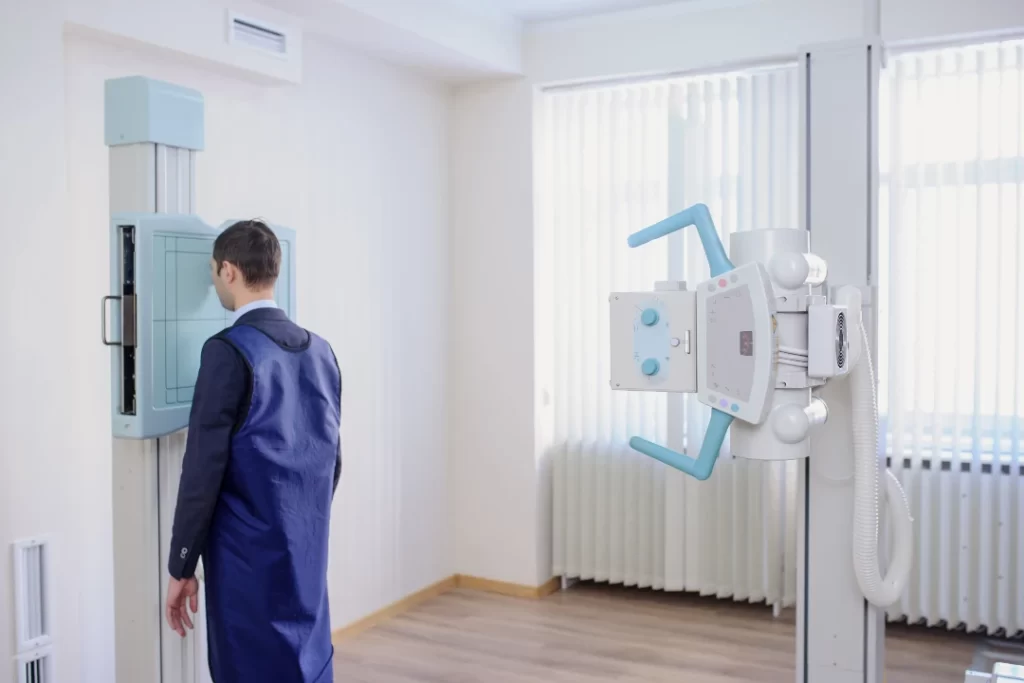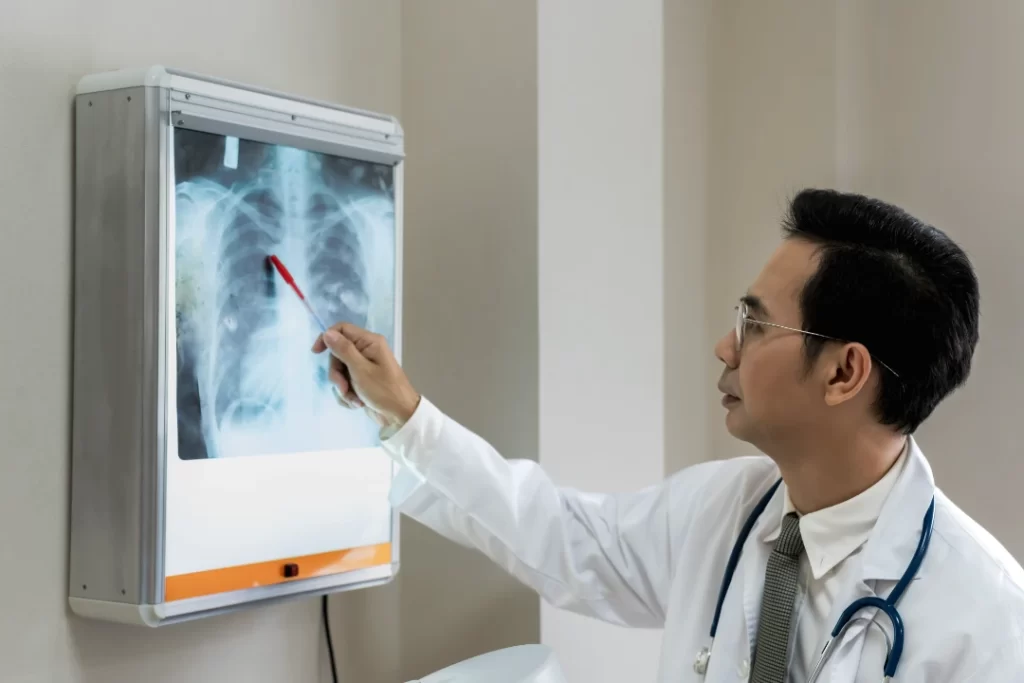What is an X-ray?
X-rays are a common imaging method which captures images of skeletal structure and some tissues on a film or digital recording plate. X-rays are generally used in health assessments to diagnose certain health conditions – providing doctors with immediate and accurate information that depicts a patient’s state.
At Ardennes Health, we offer a range of X-ray services that cover different parts of the body such as the chest, upper limbs, lower limbs and spine.


How does an X-ray work?
X-rays are an important diagnostic tool that uses a small amount of ionising radiation to produce images of the bones. As such, x-rays are often mandatory as the detailed radiographic images of the inside of your body will enable doctors to identify, and diagnose fractures, bones, and other conditions.
What benefits does an X-ray offer?
Some of the benefits of an x-ray include:
- Accurate and rapid diagnostic tool.
- Non-invasive procedure.
- Painless.
- Produces detailed real-time images.
- Time-efficient, and hassle-free.
- Zero downtime.
Why or when is an X-ray typically recommended?
Aside from screening purposes, an X-ray is typically recommended for:
- Assessing lung conditions like pneumonia.
- Detecting bone fractures or breaks.
- Identifying spine conditions such as scoliosis, or slip disc.
How is an X-ray performed?
An X-ray is performed by a radiographer or an X-ray technician. Below are step-by-step depictions of what an X-ray procedure may entail:
- You will be asked to remove clothing or jewellery that might interfere with the image.
- The radiographer proceeds to position you depending on the area of investigation so that the x-ray machine can capture the needed images.
- The X-ray machine is activated, and images are taken. Depending on the type of X-ray, you may need to hold your breath for 6 seconds such as in the case where chest X-rays are required.
- Once the images have been taken you will then collect your belongings and be guided to the waiting room.
The procedure generally takes approximately 10–15 minutes, depending on the number of organs or body parts that need to be investigated, the complexity of each case and the extensiveness of the area of investigation.

How many sessions are needed?
The frequency of an X-ray will be highly dependent on your results. In most cases, a single X-ray would suffice. On the other hand, patients with unsatisfactory results will require additional X-rays. Patients may also require more X-rays if they are being monitored for the progression of diseases or to investigate if certain medical treatments are responding as expected.
Frequently asked questions
How is an X-ray different from an ultrasound and an MRI?
The major differences between X-ray, ultrasound, and MRI are:
- MRI: uses magnetic fields, and radio waves to create detailed images of soft tissues, and organs.
- X-ray: uses radiation to capture images of bones, and some internal organs.
- Ultrasound: uses sound waves to produce images of organs, muscles, and soft tissues.
Is an X-ray painful?
No, an X-ray is not painful.
Is there anyone who is ineligible to undergo an X-ray?
Yes, there is. Pregnant women are usually advised to avoid X-rays unless absolutely necessary due to the potential risk to the unborn baby.
Are there any risks that I should be aware of?
X-rays involve a small amount of radiation exposure. While generally safe, unnecessary exposure should be minimised, especially in pregnant women, and young children.
Are there any disadvantages or limitations to X-rays?
Although X-rays are excellent for imaging bones, they are less effective for visualising soft tissues. Additionally, they also involve radiation, which, some people might not be comfortable with.

